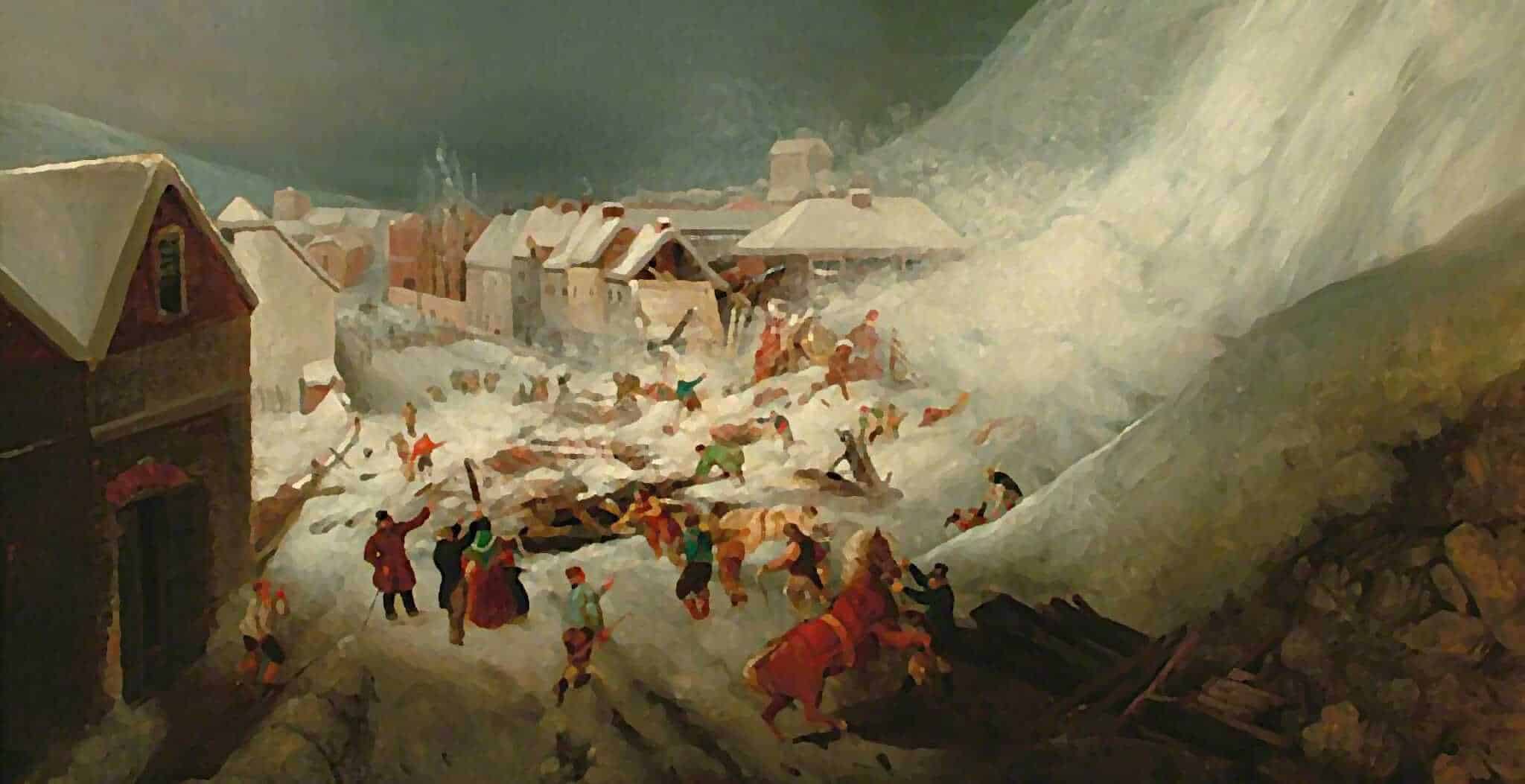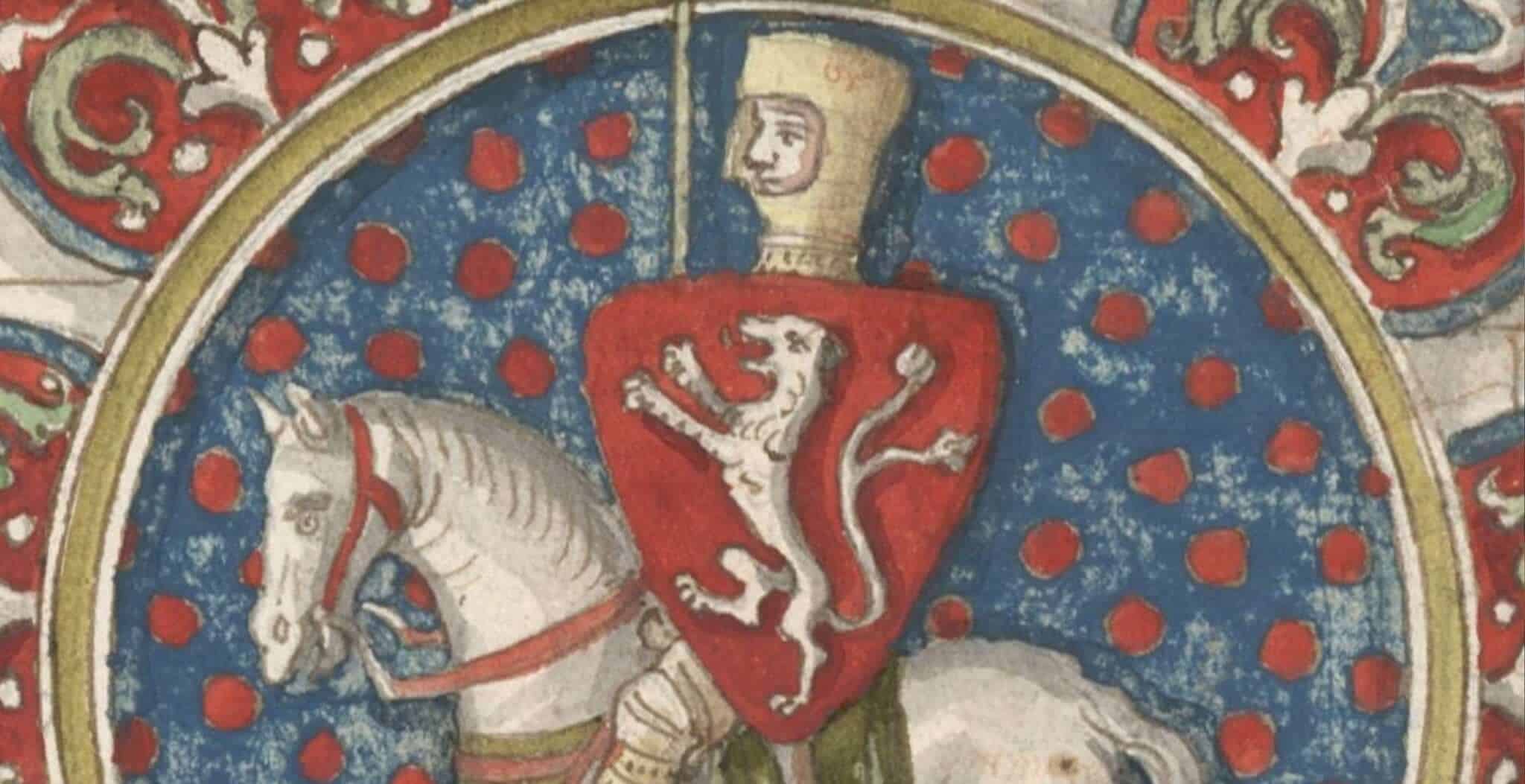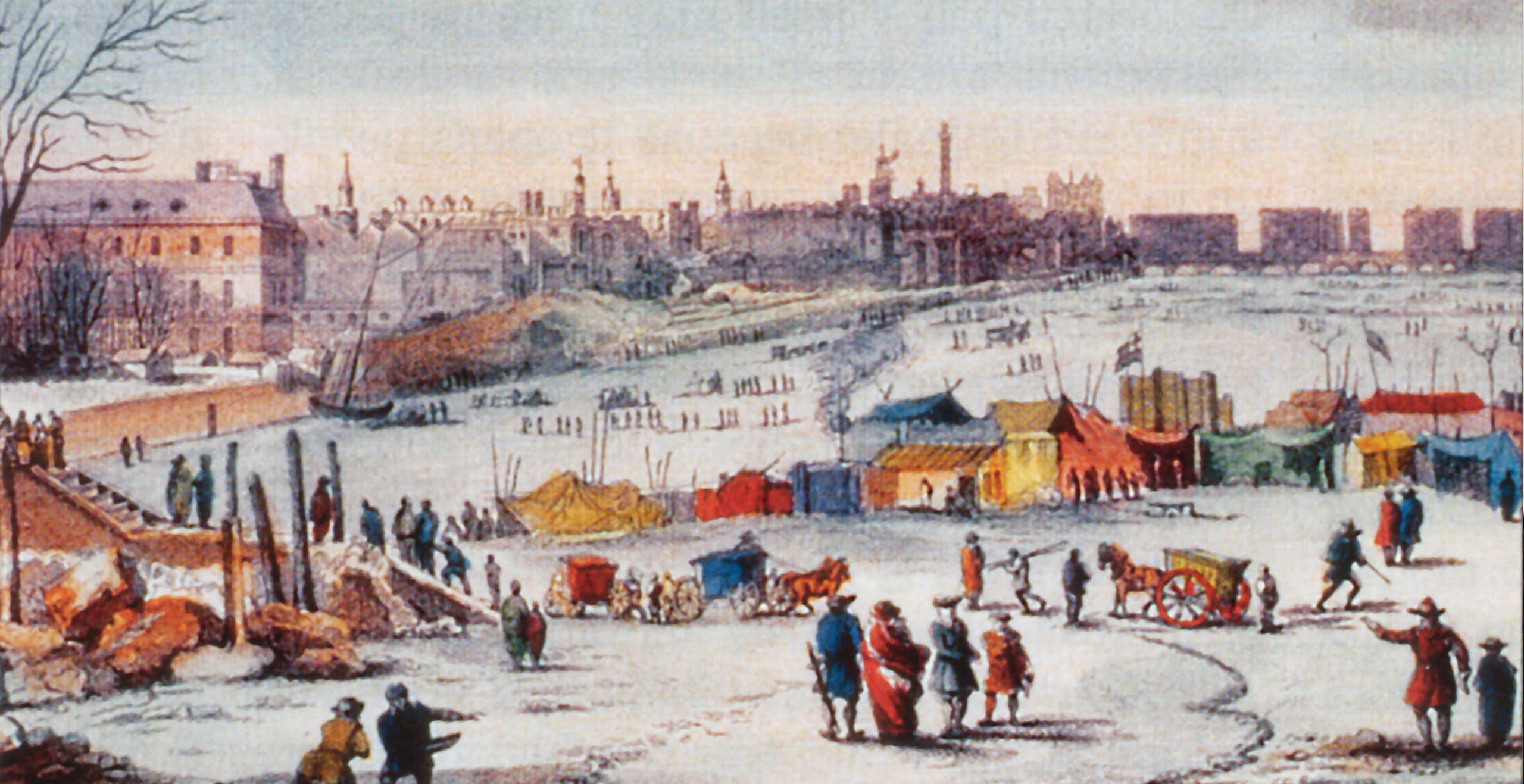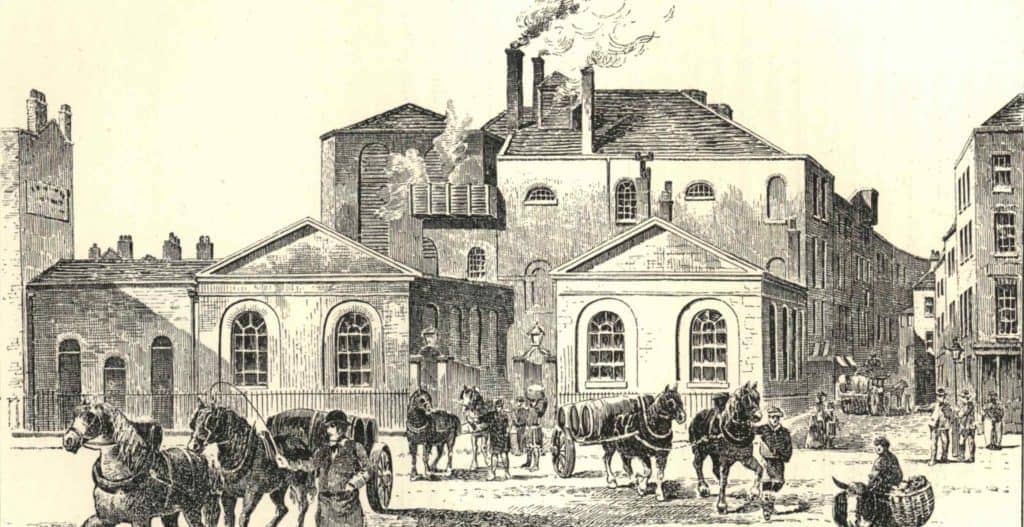The deadliest avalanche in British history took place, not in the mountains of Scotland or Wales as you may expect, but in 1836 in the town of Lewes, Sussex, just a few miles from the south coast of England.
During the winter of 1836/7 Britain suffered some of its worst weather ever recorded, with freezing temperatures, heavy snow and gale force winds.
On Christmas Eve 1836 a huge storm blew up over southern England. Heavy snowfall and gale force winds combined to produce blizzards and massive snow drifts.
The town of Lewes is situated on the River Ouse, surrounded by the hills of the South Downs. By Christmas night 1836 the north-easterly blizzard had built up a deep layer of snow on the sheer edge of one of these hills, Cliffe Hill. The great overhanging mass of snow was reportedly around 20 feet deep.
Boulder Row, a row of seven workers’ cottages on South Street, stood at the foot of Cliffe Hill. These houses were ‘poor houses’ and were owned by South Malling Parish.
It soon became obvious to passers-by that the cottages were in danger from this huge overhang of snow. They alerted the residents and advised them to move out until the snow had melted. The residents refused, even when on 26th December, a large fall of snow from the clifftop fell onto a nearby timber yard, destroying it and sweeping it into the River Ouse.
The following day at 10.15am the inevitable happened; the huge weight of snow fell, swamping the cottages of Boulder Row below.
How many people were in the cottages at the time is unknown, but contemporary reports indicate that fifteen people were inside when the avalanche struck.
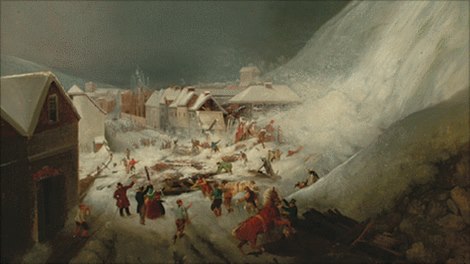
According to witnesses, the cottages were physically swept into the road by a huge wave of snow, leaving nothing to be seen except an enormous white heap. A mammoth rescue effort lasting seven hours managed to save seven people, but eight others perished from suffocation under the weight of snow.
The Sussex Weekly Advertiser reported: “The mass appeared to strike the houses first at the base, heaving them upwards, and then breaking over them like a gigantic wave. There was nothing but a mound of pure white.”
One of those rescued was two year old Fanny Boakes. The white dress she was wearing when she was rescued is on display in the Anne of Cleves House museum in Lewes, along with a contemporary painting of the tragedy (pictured).
The victims were buried in an unmarked communal grave in the graveyard at South Malling parish church. A public subscription raised money for a memorial tablet on the north wall of the church and a fund was set up to provide financial aid to the survivors and bereaved families.
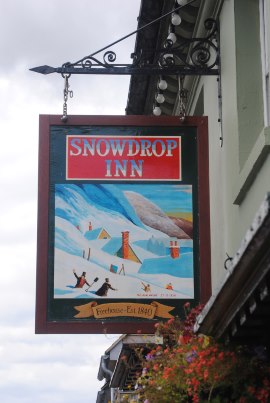
Today a pub called the Snowdrop Inn stands on the site of Boulder Row. The inn was built in 1840 and named in commemoration of the disaster.
